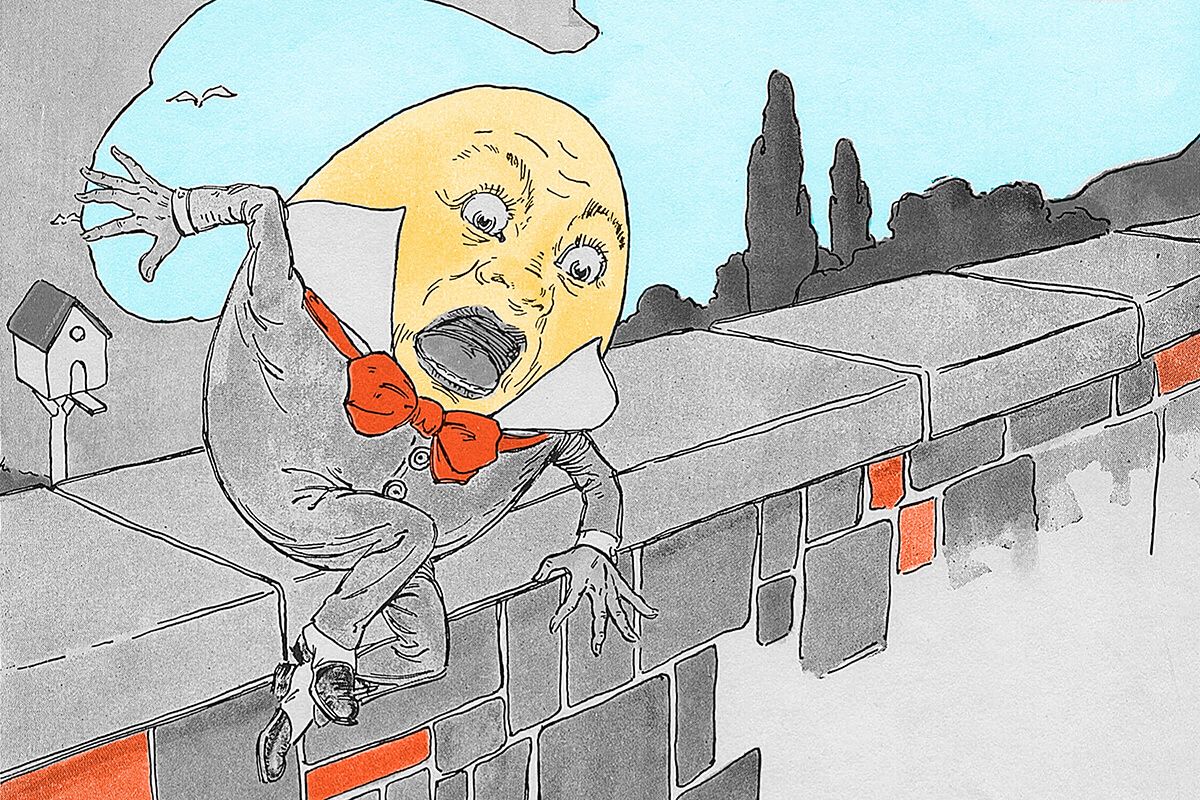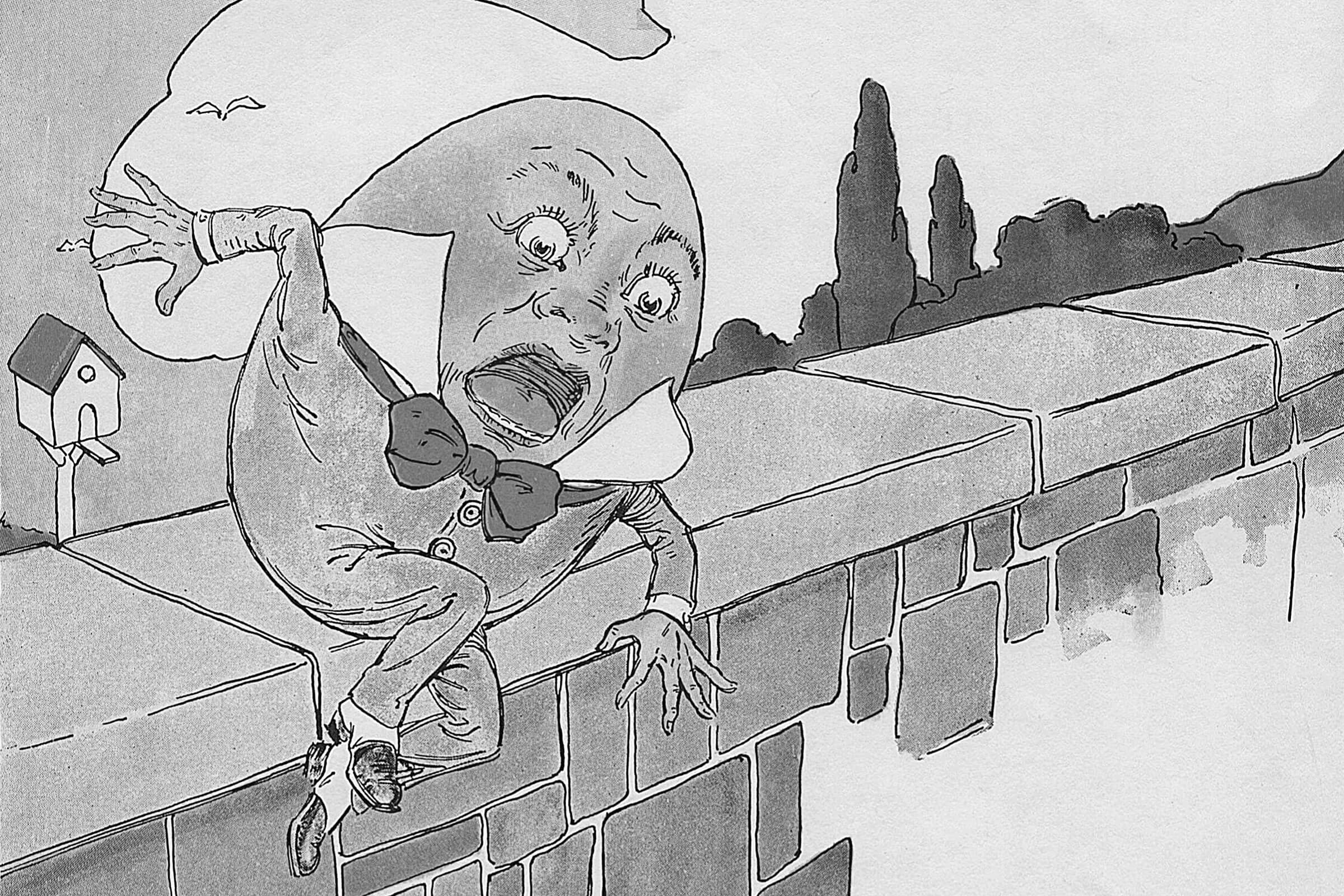

Nursery rhymes, some dating back centuries, have left a strong mark on many of our childhoods, but we often don’t realize where they came from. Some have evolved over centuries, bringing a whole new version to modern children, while others have remained tried and true since their inception. From women’s prisons and peep shows to wholesome tales of beloved pets, here are the origins of some beloved nursery rhymes.
“Mary Had a Little Lamb” Is About a Real Schoolgirl

Mary had a little lamb
Little lamb, little lamb
Mary had a little lamb
Its fleece was white as snow
Poet Sarah Josepha Hale first published a version of this poem in 1830. Around 50 years later, an elderly woman named Mary Sawyer stepped forward as the real Mary.
Sawyer’s story goes pretty much like the version we know and love today. She rescued a little lamb that had been abandoned by its mother and hand-fed it until it regained its health. One morning, she and her brother decided to bring the lamb to school. The lamb hid in a basket by Mary’s feet until it bleated, drawing attention from the teacher, who gently let the lamb outside so Mary could bring it home at lunch. The other kids did, indeed, laugh.
In a letter included in a 1928 book detailing the story, Sawyer says that the lamb grew up and had a few lambs of its own.
“Ring Around the Rosie” May Be About the Plague … or a Dancing Ban

Ring around the rosie
A pocket full of posies
Ashes, ashes
We all fall down
You may have heard the popular Black Plague origin story for this rhyme, with the titular “ring” representing the red rings that would appear on the skin of people with the disease. However, there are other variations of the rhyme, such as 1883’s “Ring a ring a rosie/A bottle full of posie/All the girls in our town/Ring for little Josie,” that present different theories.
When he analyzed this version, folklorist Philip Hiscock offered a less deadly translation. Religious bans on dancing in Britain and North America in the 19th century led to “play parties,” with ring games that were similar to square dancing but without music, so the events quietly flew under the radar.
“The rings referred to in the rhymes are literally the rings formed by the playing children,” explains Hiscock. “‘Ashes, ashes’ probably comes from something like ‘Husha, husha,’ another common variant which refers to stopping the ring and falling silent. And the falling down refers to the jumble of bodies in that ring when they let go of each other and throw themselves into the circle.”
“Here We Go Round the Mulberry Bush” Came From a Women’s Prison

Here we go round the mulberry bush
The mulberry bush
The mulberry bush
Here we go round the mulberry bush
On a cold and frosty morning
Although this rhyme likely started out using Bramble Bush (mulberries actually grow on trees), historian R. S. Duncan suggests this version came about at Wakefield Prison in England. The facility has been home to an extremely recognizable mulberry tree for centuries, and the theory goes that Victorian female prisoners used to dance around it and made up the rhyme to keep their kids amused. (Back then, men, women, and children were often confined together.) The tree eventually died in 2017, but it was replaced with a cutting from the original.
“Rub a Dub Dub” Is About a Peep Show

Rub-a-dub-dub,
Three men in a tub,
And who do you think they be?
The butcher, the baker, the candlestick maker,
And all of them out to sea
Most American children know a heavily revised version of this rhyme with only men in a tub. But you need the original version to understand the origins of this 14th-century phrase:
Hey, rub-a-dub
Ho, rub-a-dub
Three maids in a tub
And who do you think were there?
The butcher, the baker, the candlestick maker
And all of them going to the fair
According to author Chris Roberts, the “tub” here refers to a bawdy fairground attraction. “Today it would be perhaps a lap-dancing venue,” Roberts said in 2005. “The upper-class, the respectable tradesfolk — the candlestick maker and the butcher and the baker — are ogling, getting an eyeful of some naked young ladies in a tub.”
“There Was a Little Girl” Was Written by a Famous Poet About His Daughter

There was a little girl,
Who had a little curl,
Right in the middle of her forehead
When she was good,
She was very good indeed,
But when she was bad she was horrid
Many curly-haired troublesome children heard this short-and-sweet rhyme growing up — but perhaps didn’t know about its relatively prestigious origins. Famed American poet Henry Wadsworth Longfellow, known for works like “Paul Revere’s Ride,” wrote this goofy little verse about his own daughter. His son Ernest Wadsworth Longfellow wrote in his book, Random Memories, that “it was while walking up and down with his second daughter, then a baby in his arms, that my father composed and sang to her the well-known lines.”
“Humpty Dumpty” Isn’t About an Egg

Humpty Dumpty sat on a wall
Humpty Dumpty had a great fall
All the king’s horses and all the king’s men
Couldn’t put Humpty together again
There’s nothing that makes Humpty an egg in this rhyme! That image was popularized by Lewis Carroll’s Through the Looking-Glass in 1871, decades after the rhyme’s inception. According to the Oxford English Dictionary, “humpty dumpty” had a few meanings before the wall came into it, including a drink with brandy and a short, dumpy, clumsy person. An 1881 book even features images of Humpty as a clown.
A popular theory is that “humpty dumpty” refers to a cannon used during the Siege of Colchester in 1648. The idea that this rhyme is some kind of wartime ballad is pretty common. Before the cannon theory got traction, many believed the rhyme was about the usurpation of Richard III in 1483.
However, according to the Oxford Dictionary of Nursery Rhymes, the root of this nursery rhyme could be more innocent. While it’s unclear whether this game predates the rhyme, Humpty Dumpty was a popular game in the 19th century where girls would tuck their legs into their skirts, fall back, and then try to regain balance without letting go of their skirts. “Eggs do not sit on walls,” authors Peter and Iona Opie write. “But the verse becomes intelligible if it describes human beings who are impersonating eggs.”
“Hickory Dickory Dock” Is Actually About a Mouse and a Clock

Hickory dickory dock
The mouse went up the clock
The clock struck one
The mouse went down
Hickory dickory dock
Some believe this counting rhyme was inspired by the astronomical clock at Exeter Cathedral in Devon, England, which was plagued by mice. Around 1600, the presiding bishop directed carpenters to cut a hole in the door to the clock room — or, as the records said at the time, “Paid ye carpenters 8d for cutting ye hole in ye north transept door for ye Bishop’s cat.” The cathedral’s cats got easy access to prey, cutting down the vermin population. Centuries later, the door is still there.
But there’s a reason mice were so common around the clockwork: Animal fat was often used to lubricate clock parts during that time. It’s possible it was just written about a pretty normal thing to be happening on a clock at the time, but that’s not as fun.
